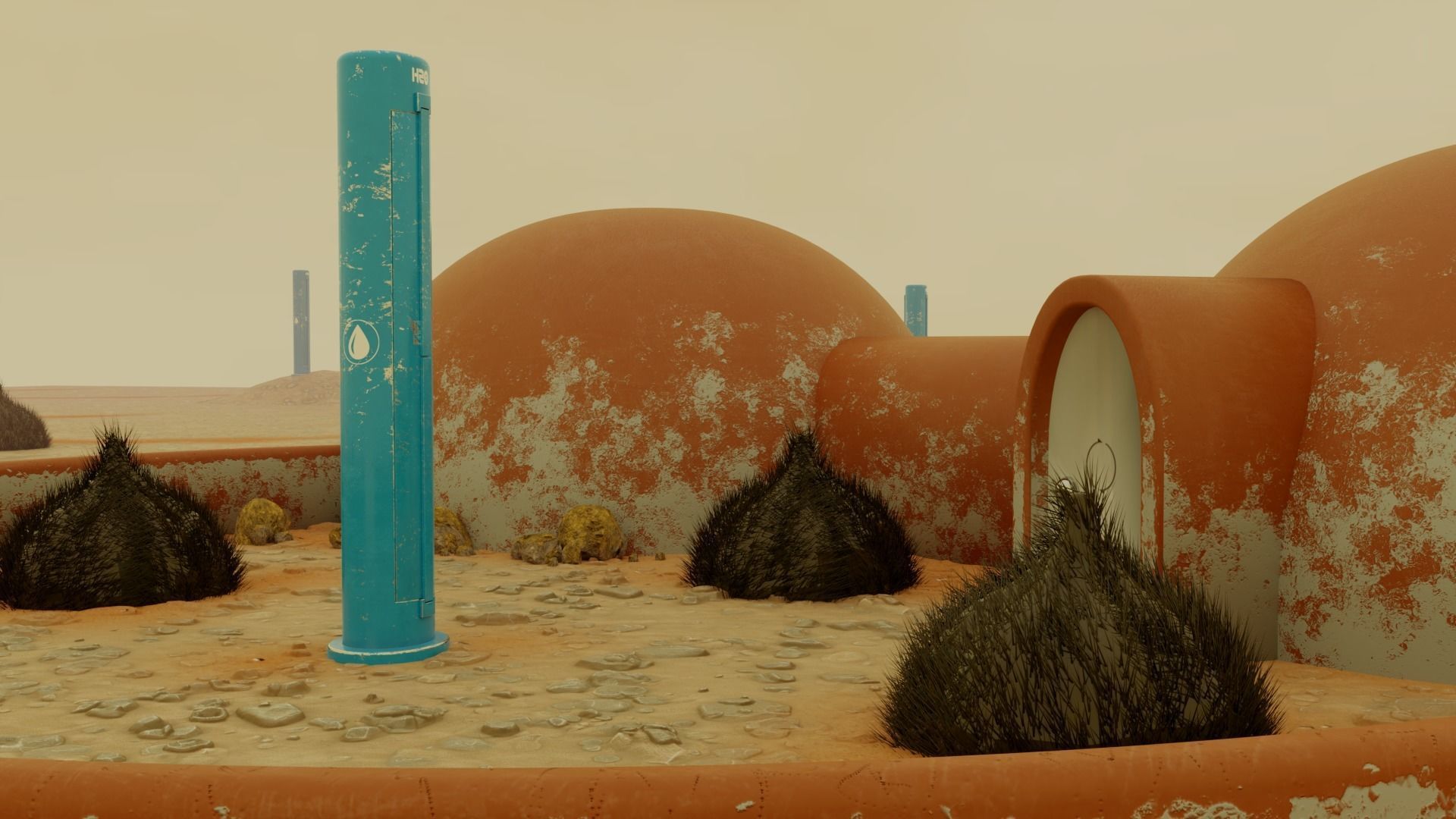
Mars Frontier Scene Low-poly 3D model
A Mars frontier concept scene I had made for a challenge competition. Most are light on the polycount.Items include:
- Rock with lichen collection (588 poly)
- Domicile
- A ‘Furry Cactus’ (35,000 verts with hair, 937 without)
- A ‘Water Catcher’ (12,416 verts)
- Textures, most of which 4k-2k Substance PBR in metal-roughness workflow
The 'Water Catcher' is animated to open (for closing, simply reverse). Please note that the animation is available only in the FBX format. Tested in Unreal Engine.
Here is the challenge application:The Water Catcher, the focus of this scene and the official entry for the Mechanical Award, is a mechanical solution to the problem of water scarcity on Mars. It can be placed around urban settlements as well as frontier domiciles. When night comes and the humidity shoots up, the Water Catcher deploys sails whose membrane is extra rough and cooler than the environment. Air hits the sails and the humidity it contains undergoes rapid freezing and accumulates on the sail (sails that catch the humidity itself may also be used, though given Mars’s thin atmosphere, the amounts they’d catch would be so miniscule it’d hardly be worth the effort). Before dawn the catcher retracts the sails and seals them in its hermetically sealed body. An air condenser then increases the pressure inside the water catcher and a heater heats up the micro environment to levels where the humidity caught in the sails can transform into water. The water then trickles down and into a pressurized reservoir, from which they are later collected.The Furry Cactus is a genetically modified plant that combines the water retention capacity of cacti with a durability to cold climates. The main purpose of the Furry Cactus is to siphon humidity directly from the air through its hair-like leafs, which are ideal to the task as they have plenty of surface area and durability in harsh climates. To make efficient use of the weak Martian radiation, Furry Cacti have low albedo — and therefore a high solar absorption rate. When the cactus matures it is harvested for its water and bio matter (which can be fermented into a more than decent Tequila).The Seeder Lichen (the yellow mossy patches on the rocks) is a genetically modified Arctic Lichen designed to serve several purposes — first, to produce methane, one of the most efficient greenhouse gasses, which will increase Mars’s atmosphere’s energy buffer and help dense it up, making it more warm and hospitable to higher life forms, and turn back its continuing degradation, and second, to enrich the soil. Similarly to the role cyanobacteria played on Earth billions of years ago, the Seeder will set the stage for more advanced forms of life.The domes in the background serve as an airlock to an underground house and as a pantry that takes advantage of Mars’s low temperature to keep consumables cold. As their base color suggests, it is constructed using local material.Credits:Game Textures from Substance Share for the Martian soil texture








